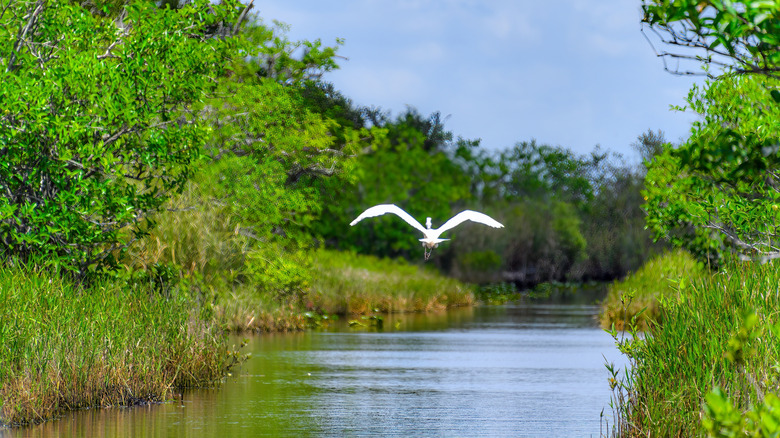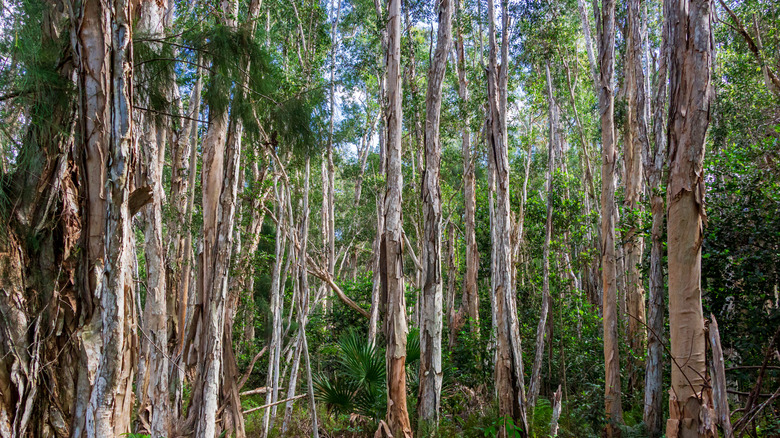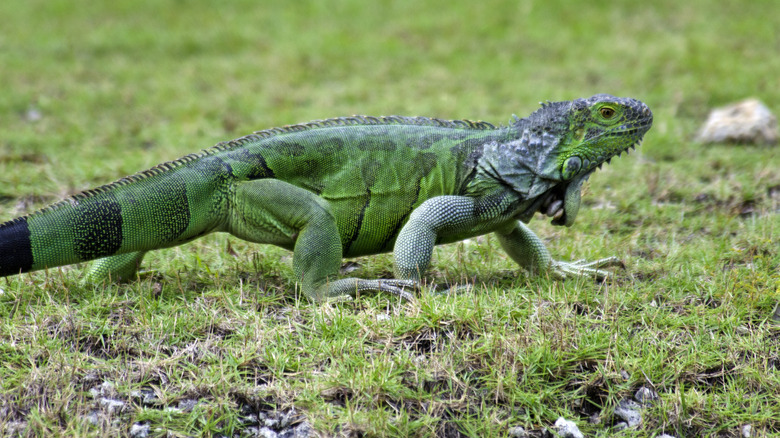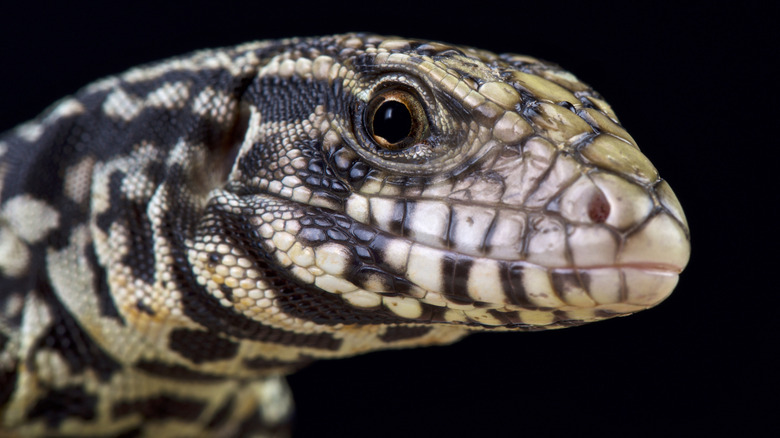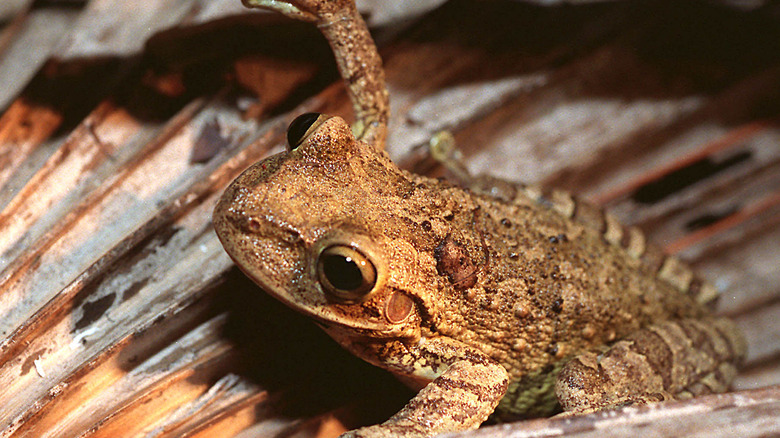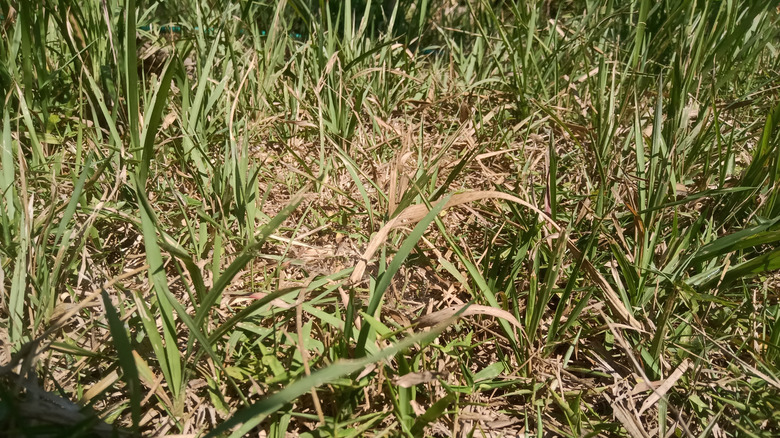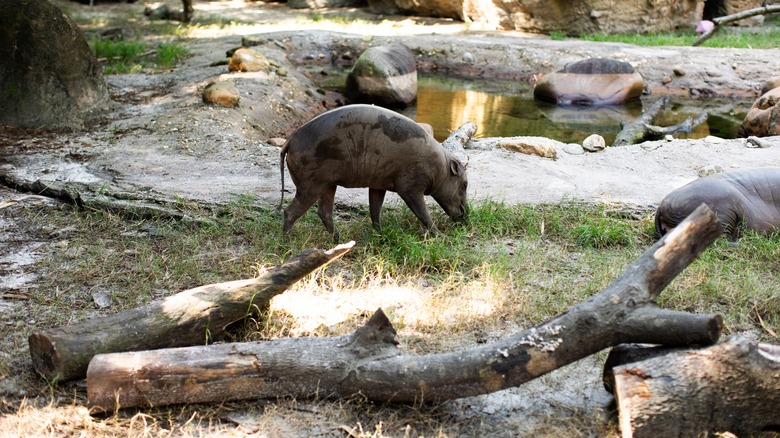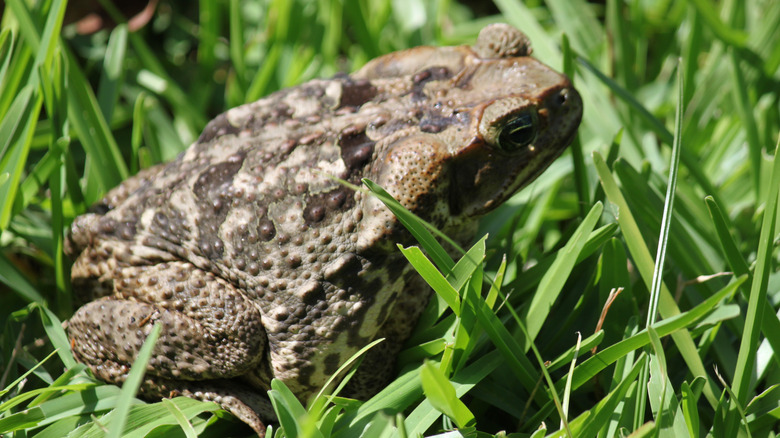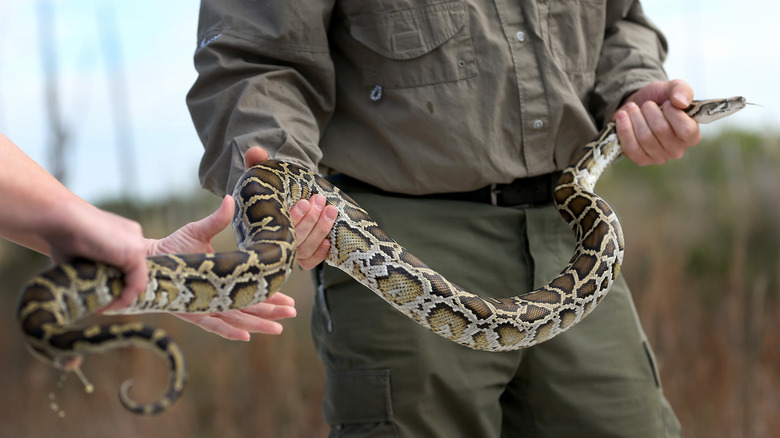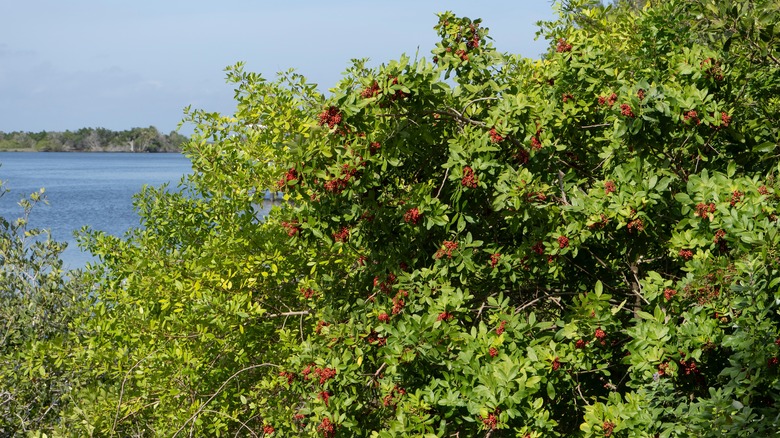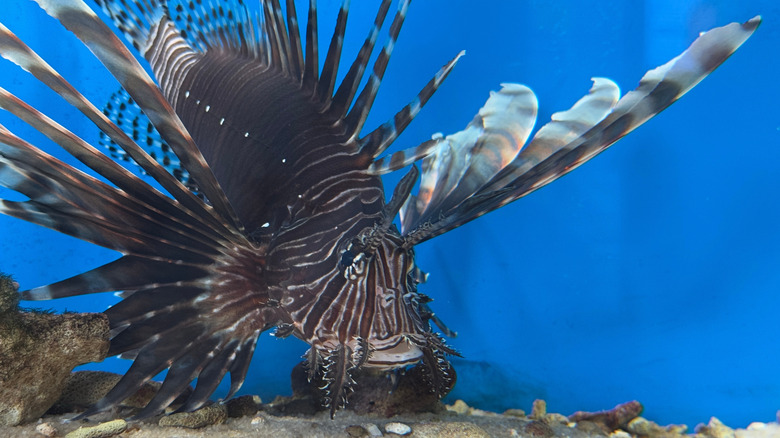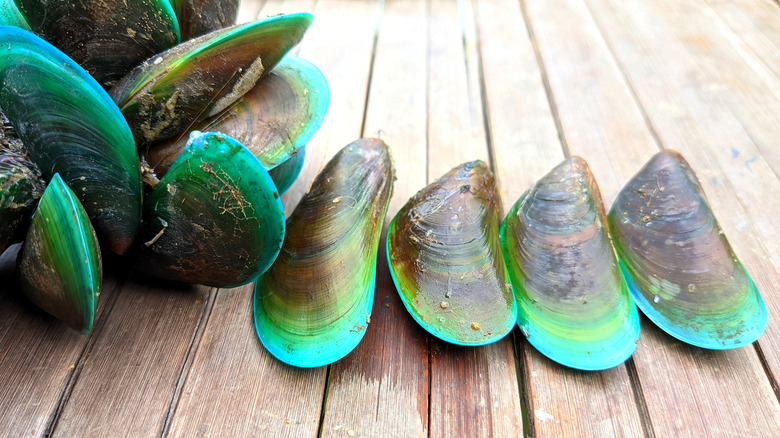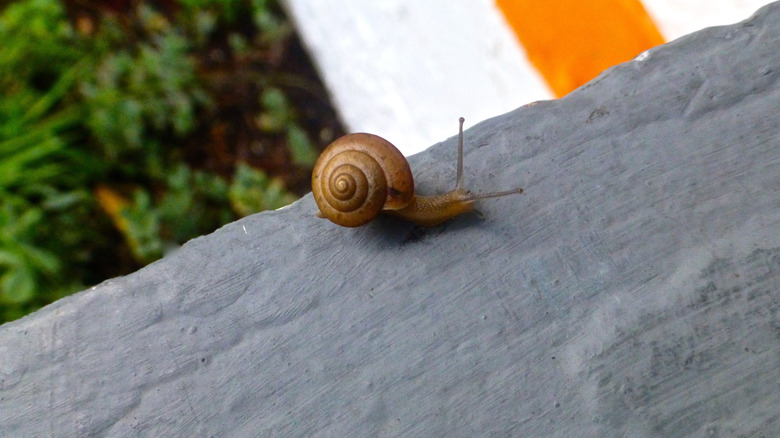12 Worst Invasive Species In Florida
Nicknamed the "Sunshine State," Florida continues to draw tourists and new residents thanks to its weather and activities. Florida is also arguably one of the most fascinating and diverse areas on the planet. In fact, the region has more than 80 ecosystems. Among these include wetlands, coastal waterways, rivers, forests, and more, all of which numerous native species depend upon.
Unfortunately, many of Florida's native species increasingly face threats, including those posed by human activities and loss of habitat. On top of this, there are several invasive species that crowd out native species, take their food, and even prey on their eggs. Without costly intervention, the impacts of invasive species in Florida can be catastrophic and lead to permanent changes in ecosystems throughout the state. Furthermore, some invasive species can impact homes, recreational areas, and even spread diseases to humans. While the number of invasive species continue to rise, there are several plants and animals that rank among the very worst in this state.
Melaleuca
Melaleuca are one of the most notorious invasive species in Florida. They first arrived in the United States from Australia in the 1800s, and they have been a nuisance ever since then. While these trees can sometimes blend into wilderness areas, they are distinguishable by their massive height of 80 to 100 feet and peeling bark. The trees are usually gray, though the bark is sometimes tan or orange, too. It's often confused with a Florida native tree species called the bottlebrush. However, while the bottlebrush tree has red flowers, melaleuca trees produce white ones only.
These trees spread quickly and are known to overtake native species due to their high water intake. Wetland areas of Florida, particularly the Everglades, are the most vulnerable to the dangers of melaleuca, and the tree is known to completely change natural landscapes. In fact, melaleuca is such a problem in Florida that federal agencies have also spent time and money trying to tackle these persistent trees along with local programs. Anyone who has suspected melaleuca on their property are encouraged to contact a landscape professional. Each tree can produce an astonishing 20 million seeds each year, which explains its rapid spread in the Florida landscape.
Green iguanas
Officially added to the Florida prohibited species list in 2021, green iguanas have become a large problem in the state in recent years. The first danger is their preference for eating vegetation that native species rely upon. They also are known to hunt bird eggs, posing the risk of declines in native avian species. Green iguanas can also hide out in homes and yards, creating a nuisance for people who reside in the state. They also have the potential to spread dangerous Salmonella bacteria through infected feces that can end up in water. These 12 to 18-inch long creatures are thought to have began as previous pets that were released or perhaps escaped into the wild.
Despite there being animals that eat iguanas, the species is becoming increasingly ubiquitous across the state, but especially in southern Florida. These include areas such as Broward, Miami-Dade, and Lee Counties. However, they have also been reported north in the Tampa and Gainesville areas from time to time. Ironically, the iguanas prefer hiding out in man-made areas, including canals, vacant lots, and drainage pipes. If you spot a green iguana on your property, experts advise contacting a professional wildlife trapper. You can also help deter these invasive species from seeking out your home as refuge by maintaining your yard and filling in any holes in the ground. The iguanas also purportedly don't like the sound of windchimes, so you might consider hanging a few of these around your property as humane deterrents.
Tegu lizards
Small lizards on your lawn or inside your pool cage are commonplace in Florida. However, if you've ever spotted a large black-and-white striped lizard, this is likely an invasive tegu lizard. This is the most common tegu lizard species seen in Florida, while the other two are the red tegu and gold tegu. Indigenous to South America, tegu lizards can grow up to 5 feet long and weigh about 10 pounds. Like green iguanas, tegu lizards are thought to have grown in population in Florida due to the pet trade. They are now classified as prohibited species in the state of Florida.
Today, invasive tegu lizards are becoming problems for various parts of Florida, but they are particularly notorious in Charlotte, Hillsborough, Miami-Date, and St. Lucie counties. They are a problem for numerous native species because of their diet of eggs. This includes those of the threatened gopher tortoise, as well as other species, such as alligators and birds. What's more, tegu lizards can pose problems to humans by disrupting agricultural lands and spreading diseases. For these reasons, anyone who spots a tegu lizard is encouraged to contact the Florida Fish and Wildlife Conservation Commission (FWC).
Cuban tree frogs
While the presence of invasive green iguanas and tegu lizards in Florida are attributed to the pet trade, other non-native species have made their way to the state through international trade practices. One example is the Cuban tree frog, which was thought to make its way to Florida via cargo ships during the 1920s from Cuba and the Bahamas. Since Cuban tree frogs can lay as many as 1,000 eggs each year, it's easy to see how these species have quickly spread throughout the state. They are particularly active during the wet months when they also prey on a variety of insects and native species, such as other frogs and small lizards.
Interestingly, one of the similarities between frogs and humans is that neither is afraid of the other, with many people reporting incidents of Cuban tree frogs jumping on them. These invasive species not only cause problems for wildlife, but they can also interfere with plumbing and utilities for homes. While some experts have offered advice for dealing with Cuban tree frogs in homes and on human property, others believe the species is so widespread that killing one will do little to solve the problem. Florida law states that it is illegal to catch and release these frogs, so if you do find one in your home, you may consider contacting a wildlife removal professional.
Cogon grass
When considering invasive species, grasses might not be at the top of mind. However, one type of grass is particularly dangerous to Florida's natural ecosystem: cogon grass. Indigenous to southeast Asia, this species came to the U.S. in 1911. Classified as both a weed and a pest, cogon grass poses significant issues for the survival of other grasses, as well as trees and wildlife. It can also grow between 2 and 5 feet tall, and it's identifiable from its yellow-green blades with toothed edges. Each blade of cogon grass also has a vein that is not quite in the middle. While considered a problematic species across the state, cogon grass is especially commonplace in central and northern regions.
In particular, cogon grass is problematic for Florida's natural pine trees. The tall grass can quickly overtake pine tree sites in both wet and dry areas, and it can prevent the growth of new trees. The grass is also commonplace in recreational sites, ditches, and near roads. Experts recommend treating with herbicide during the fall months, or working with a landscape professional for safe eradication.
Feral hogs
Despite their large presence in the Florida for several hundreds of years, feral hogs are not native to this region (and not only that, but this invasive species is also destroying Texas). Also called wild hogs, it's thought that these animals were first introduced to the area by Spanish explorers in the mid-1500s. Since then, feral hogs have caused problems for a variety of native species thanks to their destructive tusks. Each hog can weigh at least 150 pounds and grow up to 6 feet long.
Feral hogs tend to travel together in large groups while they eat native plants, destroy agricultural crops, and disturb Florida's natural landscape with their rooting behaviors. They can also be aggressive towards humans and pets during accidental encounters. While some people hunt or trap feral hogs, they must also obtain proper permits and follow state laws to be able to do so. The exact numbers of feral hogs in the state are unknown, although 2023 saw a shocking 1,193 reported sightings. Anyone who sees feral hogs on their property are encouraged to contact a wildlife removal professional.
Cane toads
Cane toads are large amphibians native to parts of Central and South America. Unlike some other invasive species that were introduced to Florida on accident, the cane toad was intentionally brought to the region to help control sugar cane pests during the 1930s and 1940s. Also called giant or marine toads, these nonnative amphibians can grow between 6 and 9 inches long, making them relatively easy to identify compared with other species, such as southern toads. In fact, as a rule of thumb, any toad longer than 4 inches in Florida is likely an invasive species.
Still, it's not the size of the cane toad itself that makes it a problem. Instead, the danger lies in the bufotoxin released from cane toads as their defense mechanism against perceived threats. This substance is poisonous to animals of all kinds, and it can even be deadly. Not only are native animals at risk, but this is also a danger to pets who might accidentally lick or bite the cane toad. Humans can also suffer from skin burns if they come into contact with these secreted toxins. Aside from their poisonous nature, cane toads are also problematic due to their ability to breed rapidly and crowd out native toads and frogs. Cane toads should be caught and can be handled by wildlife removal experts.
Burmese pythons
There are about 50 different types of native snake species in Florida. However, Burmese pythons are not one of them. In fact, this snake is indigenous to parts of China, India, and the East Indies. Burmese pythons are also far larger than your typical garden snake, and can be quite frightening to encounter with their average length of 6 to 9 feet. (To date, the largest Burmese python captured in Florida was more than 18 feet long!) Aside from their size, these snakes are identifiable by their large, giraffe-like spots along their backs.
Burmese pythons are considered among the most dangerous of all invasive species in the Sunshine State, destroying the Florida Everglades. Not only do these massive snakes feed on native species, but they also don't have any natural predators to control their population growth (with the exception of humans). They are also dangerous to people and their pets. To date, Burmese pythons are primarily found in southern Florida as well as the Everglades. As with some of the other exotic species now found in the state, these pythons are thought to have been introduced into the wild as former pets. Due to the dangers these snakes pose to Florida and virtually all of its inhabitants, it's important to immediately contact the FWC if you see a Burmese python.
Brazilian peppertree
Like many other invasive trees in the U.S., the Brazilian peppertree was intentionally introduced for aesthetic reasons without considering possible consequences to the ecosystem. This evergreen-like shrub is indigenous to Brazil and other parts of South America. It was introduced to the U.S. in the 1890s, but it later gained popularity as an ornamental tree in the 1920s. The tree was coveted for its tall size, but also for its red fruit and white flowers. Today, there are two types of hybrid Brazilian peppertrees in Florida, both of which are hardier and more difficult to eradicate than their original South American ancestors.
The Brazilian peppertree is dangerous to the Florida ecosystem in several ways. First, since it grows rapidly and can adapt to harsh environments, the trees can crowd out native ones. Over time, clusters of the peppertrees can form and create canopies, thereby blocking out the ability of native trees obtain sunlight. It can also emit toxins in the soil that prevent native plants from thriving. The tree can even crowd out nesting grounds for gopher tortoises (a clearly identifiable Florida land turtle) and native birds. Left undeterred, a Brazilian peppertree can grow up to 30 feet tall, and it's especially problematic to western and southern areas of Florida, as well as the Everglades.
Lionfish
Unfortunately, Florida's waterways are not immune to invasive species, either. Such is the case with the lionfish. While prized for their unique appearance, lionfish are not welcome in Florida's waters due to their reputation of preying on other reef fish. Additionally, these may hunt certain species that Florida waterway natives depend upon for their own food sources. Lionfish are identifiable with their red or brown zebra-like stripes, and they can also reach up to 15 inches long. Researchers aren't sure exactly how lionfish ended up in Florida's waters, but they reside along other areas of the Atlantic coast and first appeared in Florida during the mid-1980s. The fish is actually indigenous to parts of the Red Sea and Indo-Pacific Ocean.
To help control the lionfish population, there are no set rules against the number of lionfish people can collect, including during recreational activities. However, you must still have the appropriate gear and fishing licenses, and avoid trying to fish in areas clearly marked as "no fishing" areas, such as wildlife sanctuaries. You're also encouraged to contact the Reef Environmental Educational Foundation (REEF) if you spot lionfish.
Asian green mussels
Asian green mussels are another problematic species lurking in Florida waters. The mussels are native to the Pacific and Indian Oceans, and it's thought they were introduced to the Gulf of Mexico by cargo ships in the 1990s. The first Asian green mussel in Florida was found in Tampa Bay, and then in Charlotte Harbor, Jacksonville, and Ten Thousand Islands within a few years. They're identifiable by their bright, green colored shells, and they can grow to 6 inches or more.
Asian green mussels may not get as much attention as other invasive species in the region, but they are dangerous to other water species because of the way they crowd out native mussels and disrupt food sources for fish and crabs. They can also pose direct disruptions to certain human activities. For example, the mussels can gather around pipes in large numbers, which can disrupt water flow to utility plants. Asian green mussels have also been known to damage boat hulls and sink buoys and water markers. People who have boats should inspect their hulls often and remove any green mussels that might be growing on them.
Giant African land snails
There are numerous types of snails you can find in Florida. However, the Florida apple snail is the one and only type that is native to the region. The rest are considered non-native, with many also holding invasive statuses. The Giant African land snail is among the worst for Florida's ecosystem because it crowds out other species while being able to reproduce rapidly without any natural predators to stop it. In fact, the snail can produce up to 2,500 eggs every year.
Also regarded as one of the world's most destructive land snails more generally, the Giant African land snail is known to eat plants that native Florida species rely on. In fact, its diet consists of more than 500 plants. It can also cause problems in farms and carry meningitis-causing parasites that may harm humans. What's more, the snail can literally feast on certain homes by eating stucco. In an effort to reduce the population of Giant African land snails, there are currently three Florida counties with quarantine areas, including Pasco, Broward, and Lee Counties. The hope is to a complete eradication of the species, which was done twice before in 1975 and 2021.
